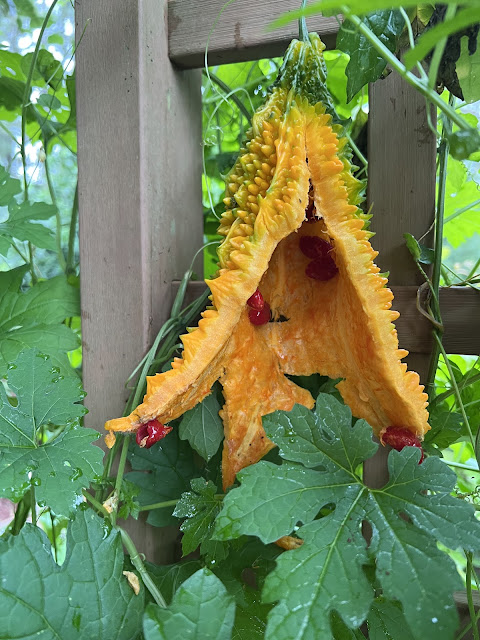The temperature every day hovers between 90 and 100, at night it rarely gets below 80°. It rains every day, and then the sun shines, creating a steamy humid soup. When you wake up in the morning, your windows are fogged up with condensation from the humidity, even at 5 a.m. In north Florida, and pretty much anywhere in the Southeast, this is how it is in July.
All the tomatoes are gone except a few hardy cherry varieties. The summer squash has slumped and disappeared. The peppers are still hanging on, but they’re not blooming. You’ve harvested your last green bean and your last ear of corn. The best eggplants have been picked and eaten and okra requires that you go to the garden every day to harvest. What do you do with that much okra anyway? Spending time in the garden is a hot sweaty ordeal.
There are some plants which make your efforts worthwhile. Most any type of cowpeas will thrive at this time of year and it’s not too late to plant them. Keep up with your okra and eggplant and they’ll continue to produce throughout the summer and into fall. Nurture your peppers and as soon as the weather cools a little, they’ll start producing again.
Pictured below are some other plants which will reward you with refreshing flavors and trouble-free gardening. Many of them are perennials which come back every year with no help from you. How much easier can it get?
 |
| Thai Ginger (Alpinia galangal) |
 |
| Galangal blooms. The leaves can be used to wrap fish or vegetables for steaming and the rhizomes are used much like culinary ginger. |
 |
| Native Dune Sunflower (Helianthus debilis) blooms all summer, comes back every year, and attracts and feeds helpful insects |
 |
| Mexican sunflower (Tithonia rotundifolia) provides a wall of blooms along the edge of the garden |
 |
| Dune sunflowers surround the pole holding Purple Martin gourds. |
 |
| Pole beans and a tropical cucumber relative |
 |
| French Marigolds provide ground cover and fight nematodes |
 |
| Gulf fritillaries and many other insects love the Tithonia. Here they find food, habitat, and prey. |
 |
| Okinawa spinach, another heat-loving perennial. |
 |
| Asparagus provides a wispy contrast to other garden plants as it stores up energy for its spring harvest of shoots. |
 |
| Sochan or Cherokee Greens (Rudbeckia laciniata) provides fresh or cooked greens all summer |
 |
| Jerusalem Artichoke (Helianthus tuberosus) This is a smaller variety – Dwarf Sunray. Rhizomes provide crunch to salads and stir fries. |
 |
| Turmeric (Curcuma longa) grows under the partial shade of a Loquat tree. Use a small knob of the rhizomes in smoothies; reported to reduce inflammation. |
 |
| Chayote (Sechium edule) completely covers a large trellis. The mild light green fruit can be used like summer squash. |
 |
| Culinary Ginger (Zingiber officinale) |
 |
| Comfrey blooms |
 |
| Comfrey (Symphytum officinale) Feeds pollinators and accumulates minerals from deep in the soil. |


No comments:
Post a Comment